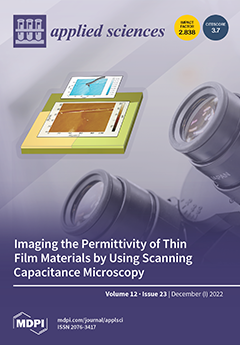The skin is a physical barrier to protect the human body and is rich in microbial niches. Skin is damaged due to several factors, including poor nutrition and exposure to harsh environments resulting in dryness, acidic skin, and infections. Studies have shown that
[...] Read more.
The skin is a physical barrier to protect the human body and is rich in microbial niches. Skin is damaged due to several factors, including poor nutrition and exposure to harsh environments resulting in dryness, acidic skin, and infections. Studies have shown that probiotics and their derivatives could protect the skin. Skin care products with probiotic components are the latest approach to developing cosmetic products with health benefits. The current study aimed to examine the moisturizing effect of paraprobiotics (moist heat-inactivated
Bifidobacterium lactis (
B. lactis),
Lactobacillus plantarum (
L. plantarum))-containing moisturizer (APM) and its influences on the skin microbiome of healthy subjects. Fifty healthy subjects were randomly divided into treatment (
n = 25) and control (
n = 25) groups. The APM or placebo (without paraprobiotics; PM) was applied on the skin of the right forehand of subjects, and the changes in transepidermal water loss (TEWL) and stratum corneum moisture (SCM) levels every 1 h for 4 h and after 4 weeks of treatment were observed. Skin swab samples were collected before and after the treatments (4 weeks) and subjected to microbiome analysis through next-generation sequencing technology. The results indicated that the APM treatment significantly reduced the TEWL and increased the SCM values compared to the respective baseline values and controls. The sequencing study showed significant changes in
Cutibacterium (
p = 0.0431)
, Corynebacterium (
p = 0.0431), and
Acinetobacter (
p = 0.0431) in the treatment group. The changes in phylum were not statistically significant. Still, based on the relative frequency, the abundance of phylum Proteobacteria and Firmicutes and Cyanobacterial was decreased, and the abundance of Planctomycetes, Chloroflexi, Verrucomicrobia, and Gemmatimonadetes was increased after treatment. Additionally, the APM treatment suppressed
C. tuberculostearicum in healthy subjects. The results suggested that APM could improve skin hydration and skin-beneficial microbial composition. The study has limitations such as a small sample size and treatment period, so further extensive studies are required to confirm the findings of the current study, which could aid in developing paraprobiotics-based skin care formulations.
Full article





